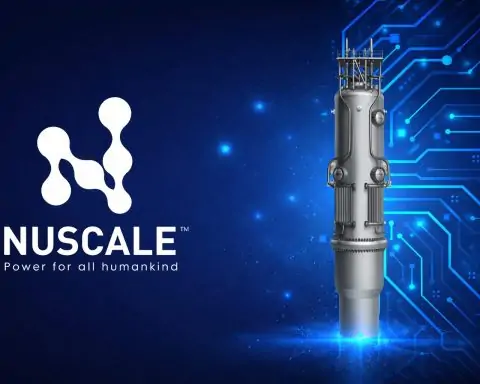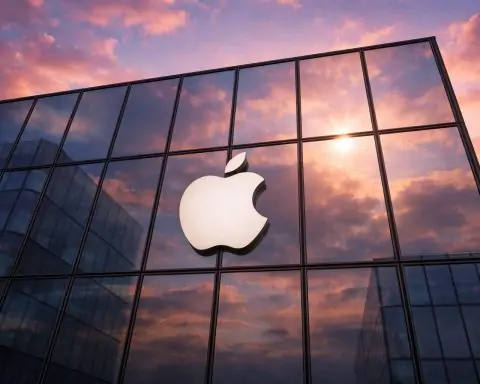- Doubling output & workforce: Foxconn’s Hyderabad facility will double AirPods output to ~200,000 units per month within 6–8 months and boost its staff from ~2,000 to ~5,000 [1] [2].
- Major expansion investment: Foxconn is investing about ₹4,800 crore (~$580 million) to expand the Telangana plant, overhauling five production lines (with some machinery moved from Vietnam) and adding new equipment [3] [4].
- Strategic supply shift: The move is part of Apple’s strategy to diversify manufacturing away from China, aiming for a more resilient supply chain amid trade tensions and geopolitical risks [5].
- Overcoming supply snags: AirPods output was briefly hampered mid-year by a dysprosium rare-earth shortage (after China’s export curbs), but production normalized once Beijing eased restrictions in August [6]. Foxconn said the immediate impact of China’s rare-earth curbs was limited, but warned of disruptions if the situation escalated [7].
- India’s rising role: Apple only began making AirPods in India in April 2025, and the Hyderabad site is envisioned as a full-fledged “audio hub” for global markets [8]. Apple’s India output is surging – iPhone exports from India hit $10 billion in the first half of FY2025 (up 75% year-on-year) [9] – and other suppliers (like AirPods case-maker Jabil) are also building new factories in India [10].
Foxconn Expands AirPods Production in Hyderabad
Apple is rapidly scaling up AirPods manufacturing in India. According to sources, Foxconn Interconnect Technology (FIT) – a subsidiary of Apple’s main manufacturing partner Foxconn – plans to double production at its Hyderabad, Telangana plant within the next 6–8 months [11]. The Kongara Kalan facility (about 15 km from Hyderabad’s airport) currently produces just over 100,000 AirPod units a month after starting mass production in April 2025 [12]. By early 2026, that output is targeted to reach 200,000 units per month, effectively doubling capacity [13].
To achieve this, Foxconn is undertaking a major expansion of the Hyderabad operation. Five existing assembly lines are being upgraded and refitted, and additional production lines are being installed – with much of the specialized manufacturing machinery being brought in from Foxconn’s Vietnam facilities [14]. “This used machinery is coming from FIT’s Vietnam facility. I think one or two lines will be new because they are still expanding,” one person familiar with the plans said [15]. The total investment in ramping up the plant is estimated at ₹4,800 crore (about $580 million), with over ₹3,000 crore already spent on the initial phase [16]. This includes not only relocated equipment but also brand-new tooling to support production of Apple’s latest AirPods models (like the AirPods 4 and AirPods Pro 3 launched in late 2024–2025) [17].
Critically, Foxconn is also massively increasing the workforce at the Telangana factory to support the output surge. “The FIT factory currently employs around 2,000 personnel that is likely to go up to 5,000 in the next six to eight months,” said one source, underscoring the huge hiring drive underway [18]. In other words, Foxconn expects to add roughly 3,000 new workers at this site alone. Many of these hires will be skilled assembly operators helping run the additional AirPods lines. The expansion underlines Foxconn’s confidence in India – and the strong demand for Apple’s wireless earbuds globally – as it scales up production capacity to meet growing global demand [19].
This Hyderabad project is not an isolated effort but part of a broader Foxconn investment in India. In fact, the AirPods plant was originally announced in 2023 as a $500+ million initiative to create a major audio manufacturing hub in Telangana [20]. Foxconn’s local subsidiary, Chang Yi Interconnect Technology (India), was set up to execute the plan, which aimed to eventually create around 24,000 jobs and produce not just AirPods but also an array of connectors and cables for various clients [21] [22]. “Demonstrating the ‘Telangana Speed’, I am happy to announce the groundbreaking of Foxconn’s first plant in Telangana at Kongar Kalan… With an investment of over $500 M it shall create 25,000 direct jobs in the first phase,” Telangana’s IT minister K.T. Rama Rao tweeted at the time [23]. That ambitious vision is now starting to materialize: the Hyderabad facility is already supplying AirPods to both domestic and export markets (including the US and Europe) and is poised to become Apple’s primary production base for audio accessories outside of China [24].
Apple’s Supply Chain Shifts Beyond China
Foxconn’s big India expansion comes as Apple intensifies its shift away from a China-centric manufacturing model. For over a decade, Apple’s vast supply chain was heavily concentrated in China, but recent global events – from tariff wars to pandemic disruptions – have exposed the risks of over-reliance on one region [25]. Now Apple is deliberately diversifying production across countries, and India has emerged as a focal point of this strategy. “The initiative underlines Foxconn’s efforts to build a more resilient supply chain and reduce reliance on China,” notes The Economic Times report on the Hyderabad expansion [26]. By ramping up in India, Apple and its suppliers hope to insulate the supply chain from geopolitical shocks like U.S.–China trade tensions or potential export controls on critical materials.
Apple’s manufacturing presence in India was initially led by the iPhone – which Foxconn and other partners (Pegatron and Wistron, now acquired by the Tata group) have been assembling in India since 2017. But now Apple is broadening Indian production to new product categories like wearables and audio devices. Apple has even tapped two companies – Tata and Foxconn – to build its latest iPhone models in India, highlighting the parallel expansion on the smartphone front [27]. The AirPods project extends this localization drive into Apple’s hugely popular wearables segment (which also includes the Apple Watch). “Apple’s move to expand the factory is part of its ongoing efforts to diversify its supply chain away from a China-centric approach,” observes AppleInsider, noting the goal is to buffer against issues such as tariff-based trade wars and pandemics [28].
Crucially, India offers some clear advantages that Apple and Foxconn are keen to leverage. The country’s vast population – now over 1.4 billion – represents a huge emerging market for Apple products, and the government has rolled out attractive incentives for local manufacturing [29]. “India has now… 1.4 billion people, [a] large potential market for mid-to-high-end products,” Foxconn Chairman Young Liu remarked on a recent earnings call, explaining why the firm is expanding production there. He noted that “more and more suppliers are investing in plants in India and… this will become more prominent as time goes on,” adding that India’s labor costs “also ha[ve] advantages” and Foxconn will continue to seek government support to boost its competitiveness [30]. Indeed, Prime Minister Modi’s “Make in India” initiative – including production-linked incentive (PLI) schemes – has already attracted major Apple contractors: Foxconn, Pegatron, and others have committed billions of dollars to set up factories in India [31].
The Hyderabad AirPods facility illustrates how Apple’s supply chain diversification is playing out on the ground. However, the journey hasn’t been without hiccups. Earlier this year, production at the Telangana plant hit a temporary snag due to a shortage of dysprosium – a rare-earth element vital for the magnets in AirPods speakers [32]. This shortfall arose after China tightened exports of rare-earth minerals (like dysprosium) in a trade-policy move. By July, the AirPods assembly lines in India were facing bottlenecks and could not get enough of the material [33]. Fortunately, the disruption was short-lived: Beijing relaxed those export curbs in August, allowing the supply of dysprosium to resume and the Hyderabad factory to get back up to speed [34]. Foxconn, for its part, downplayed the immediate impact of China’s rare-earth restrictions but warned of potential disruptions if the situation escalated or if new export limits were imposed [35]. The incident was a reminder of why Apple is spreading out its manufacturing – to reduce vulnerability to such supply shocks. It also prompted Apple to work closely with suppliers and the Indian government to mitigate any resource shortages. The fact that production recovered quickly by late summer indicates improved resilience in Apple’s new India-based supply chain.
India Becomes a Key Manufacturing Hub for Apple
The scaling up of AirPods in Hyderabad underscores India’s fast-growing importance in Apple’s global manufacturing network. Once a very minor player in Apple’s production, India is now handling an expanding share of assembly for iPhones and accessories. In fact, Apple has seen a boom in output from its India facilities over the past year. For example, Apple exported roughly $10 billion worth of iPhones from India in the first half of fiscal 2025, a 75% jump over the same period a year earlier [36]. This surge in India-made iPhones – assembled by Foxconn, Pegatron, and Wistron/Tata in states like Tamil Nadu and Karnataka – shows that India can deliver quality and scale, given the right investments. Industry analysts have predicted that Apple could produce 25% of its iPhones in India by 2025–26 if current trends continue, a remarkable shift for a company that until recently made nearly all of its devices in China.
Now Apple’s bet on India is extending to AirPods and the broader wearables segment. The Hyderabad AirPods plant is Apple’s first production line for AirPods outside of Greater China, marking a significant milestone. Foxconn chose Telangana for this project after an intense contest among Indian states to win high-tech manufacturing deals [37]. Local officials have been eager to host Apple suppliers because of the high-skilled jobs and economic boost they bring. For Telangana, landing the AirPods factory was a big win – and the state has worked closely with Foxconn to facilitate fast setup. The phrase “Telangana Speed” that Minister K.T. Rama Rao used was a nod to the state’s proactive approach in cutting red tape and providing infrastructure to get the plant operational quickly [38].
Beyond Foxconn, Apple’s supplier ecosystem in India is widening. Notably, U.S.-based Jabil, which manufactures AirPods charging cases, is planning a new production facility in Tamil Nadu to support Apple [39]. Jabil already makes components for Apple in India and its expanded presence will complement Foxconn’s AirPods assembly by localizing more parts of the supply chain. Similarly, other component makers – for everything from casings to chargers – are exploring Indian factories as Apple signals a long-term commitment to the country. This trend means the “Made in India” label will likely appear on a growing number of Apple products and accessories in the coming years.
From Apple’s perspective, increasing manufacturing in India offers multiple benefits: it diversifies risk, shortens supply lines for serving the huge Indian consumer market, and aligns with Indian government incentives that can improve Apple’s margins (through tax breaks and subsidies for local production). Apple CEO Tim Cook has repeatedly highlighted India as a “hugely exciting market” and has invested in retail expansion there (Apple opened its first two flagship stores in India in 2025) [40]. By building devices in India, Apple also sidesteps import tariffs on finished electronics, making its products more competitively priced for Indian buyers – a key factor as it tries to grow iPhone and AirPods sales in the price-sensitive market.
For Foxconn, the world’s largest electronics manufacturer, the India push is part of a broader recalibration. The Taiwanese company has been in India since 2006 and is now dramatically scaling up operations. “We have accumulated much experience in managing local employees, supply chain and logistics… allowing us to move at a pace faster than the market,” Foxconn’s chairman Young Liu said, reflecting on the firm’s 17+ years in India [41]. He emphasized that Foxconn will “continue to expand assembly and component operations in India” and is actively applying for government incentives to fuel this growth [42]. In addition to the Hyderabad AirPods plant, Foxconn has major iPhone assembly units in Tamil Nadu and is reportedly considering new ventures like chip manufacturing and EV components in India. The company’s goal is to create a robust manufacturing footprint across multiple Indian states, reducing its dependence on China and Vietnam over time.
Outlook
The rapid doubling of AirPods production at the Hyderabad facility is a strong signal of Apple’s manufacturing pivot to India. It shows that India is not just assembling entry-level gadgets, but can handle cutting-edge products like AirPods Pro that require precision and advanced processes (including working with miniaturized components and high-end acoustics). The fact that Foxconn is willing to relocate production lines from an established base in Vietnam underscores the strategic importance of India in the next chapter of Apple’s supply chain.
By early 2026, when the expanded Hyderabad plant hits full stride, Apple will have a second major production base for AirPods aside from China – a historic shift for the product. Analysts say this diversification could improve Apple’s supply chain resilience and give it more flexibility to handle global demand spikes [43]. Consumers around the world likely won’t notice a difference (AirPods made in India will be identical in quality), but behind the scenes Apple’s reliance on a single country will be a bit lower.
India, for its part, is poised to benefit from the jobs and tech know-how brought in by Apple’s suppliers. The creation of thousands of skilled manufacturing jobs – with 5,000 roles just in this AirPods factory expansion – is a boon for the local economy. It also positions India as a rising electronics manufacturing hub at a time when global companies are seeking alternatives to China. “The move marks another major step in Apple’s broader strategy to diversify its global manufacturing footprint beyond China,” notes Hindustan Times Tech, emphasizing that Apple’s long-term vision in India is gaining momentum [44] [45]. With iPhones, AirPods, and other gadgets increasingly “Made in India,” Apple’s supply chain transformation is in full swing – and experts say this is likely just the beginning of an even deeper manufacturing shift in the coming years [46].
Sources: Foxconn expansion report (ET/Business Standard) [47] [48]; Hindustan Times Tech (27 Oct 2025) [49] [50]; AppleInsider [51] [52]; TechCrunch (Telangana investment) [53] [54]; ts2.tech (TechStock²) [55].
References
1. www.hindustantimes.com, 2. www.hindustantimes.com, 3. www.business-standard.com, 4. manufacturing.economictimes.indiatimes.com, 5. www.hindustantimes.com, 6. www.business-standard.com, 7. ts2.tech, 8. www.hindustantimes.com, 9. www.business-standard.com, 10. appleinsider.com, 11. www.hindustantimes.com, 12. www.hindustantimes.com, 13. www.hindustantimes.com, 14. manufacturing.economictimes.indiatimes.com, 15. manufacturing.economictimes.indiatimes.com, 16. www.business-standard.com, 17. www.business-standard.com, 18. manufacturing.economictimes.indiatimes.com, 19. www.business-standard.com, 20. www.hindustantimes.com, 21. www.business-standard.com, 22. www.hindustantimes.com, 23. techcrunch.com, 24. www.hindustantimes.com, 25. appleinsider.com, 26. manufacturing.economictimes.indiatimes.com, 27. www.gadgets360.com, 28. appleinsider.com, 29. techcrunch.com, 30. techcrunch.com, 31. techcrunch.com, 32. www.business-standard.com, 33. www.business-standard.com, 34. www.business-standard.com, 35. ts2.tech, 36. www.business-standard.com, 37. twitter.com, 38. techcrunch.com, 39. appleinsider.com, 40. techcrunch.com, 41. techcrunch.com, 42. techcrunch.com, 43. appleinsider.com, 44. www.hindustantimes.com, 45. www.hindustantimes.com, 46. www.hindustantimes.com, 47. www.business-standard.com, 48. www.business-standard.com, 49. www.hindustantimes.com, 50. www.hindustantimes.com, 51. appleinsider.com, 52. appleinsider.com, 53. techcrunch.com, 54. techcrunch.com, 55. ts2.tech










